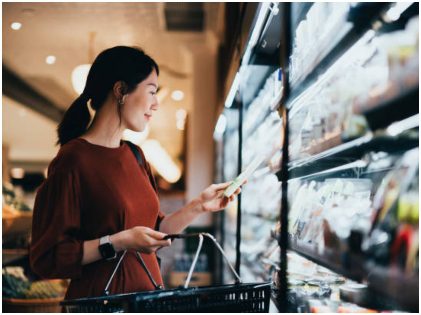The latest trends in food technology are looking to bring a sustainable change in the food sphere. Some of them include alternative protein, giving more priority to local foods, nutraceuticals, and making nutrition personalized. The food industry is looking at reducing the environmental impacts thanks to the inclusion of FoodTech startups that are focussing on waste reduction so that there is zero-waste output. Food producers have begun the process of digitizing their food products through the inclusion of robotics, eCommerce, and the introduction of food-management tools. Here’s what the future of food technology looks like right now.
Alternative Proteins
 Consumers are slowly but surely moving toward the environmental protein sources that reduce the detrimental effect on the health and environment. Today the viable protein sources include, cultured meat, plant-based meat from soya sources, and edible insects, which are regarded as sustainable protein sources at present.
Consumers are slowly but surely moving toward the environmental protein sources that reduce the detrimental effect on the health and environment. Today the viable protein sources include, cultured meat, plant-based meat from soya sources, and edible insects, which are regarded as sustainable protein sources at present.
They are nutrient-rich and reduce the total costs but they include the importance of dietary needs and continuous health monitoring.
With the inclusion of the processes of biological genesis, fermentation, and 3D printing the startups are bringing sustainable protein sources to the forefront. This change can bring a significant decrease in reducing ethical issues and the enormous impact of meat production (industrial) on the environment.
Nutraceuticals
Today there is a growing concern that food habits have on your lifestyle and health. There is also more focus on including more essential nutrients to ensure a fitter lifestyle. It took a pandemic (COVID-19) to make people realize the importance of eating healthy. It made nutraceuticals one of the top’s most popular trends, impacting the food and the sustenance industry. This awareness is making people realize the importance of nutraceuticals. By nutraceuticals, we mean functional foods, nutritional supplements, food with medicinal values, and foods that help take care of your gut namely, prebiotics, probiotics, and last but not the least, postbiotics. There is increased research on how neutraceuticals are helping people suffering from allergies, diabetes, Alzheimer’s, and diseases that result from weak immunity.
E-Commerce
 E-Commerce has been hogging the limelight in the food industry for some time now. But, the pandemic situation has affected the innovations that have been affecting the supply chains in the industry. Popular brands in the food industry have been hooked on online delivery services (on-demand) enabling people reach to the D2C or direct-to-customer models of distribution.
E-Commerce has been hogging the limelight in the food industry for some time now. But, the pandemic situation has affected the innovations that have been affecting the supply chains in the industry. Popular brands in the food industry have been hooked on online delivery services (on-demand) enabling people reach to the D2C or direct-to-customer models of distribution.
It is also increasing the need for cloud kitchens that have made eating out from an occasional practice to a necessity. the practice of food takeout and deliveries. Brands are also focusing on a different approach to distribution, (omnichannel) to ensure a better customer experience to make the customer experience a better one.
Personalized Nutrition
 Consumers today are more aware of their nutrition requirements than ever and hence there has been an increasing need for making nutrition a personalized solution. There have been specific dietary needs of people such as diets based on nutrigenomics and catering to particular preferences of people, whether it is dairy-free diets or gluten-free diets.
Consumers today are more aware of their nutrition requirements than ever and hence there has been an increasing need for making nutrition a personalized solution. There have been specific dietary needs of people such as diets based on nutrigenomics and catering to particular preferences of people, whether it is dairy-free diets or gluten-free diets.
Dietary innovations such as 3D printing in the food industry and robotic adoption in the assembly lines of food and nourishment help the customers get personalized nutrition needs. Fulfilling dietary requirements is as easy as incorporating testing kits where the urine and blood are checked to understand the person’s dietary needs. Furthermore, various devices enable users to track their food habits while keeping track of their health parameters.
Restaurant Digitization
The digitization of restaurants is ensuring that customers get a proper customer experience that also promises fuss-free operation management. Additionally, it also gives a fillip to the restaurant businesses as they get to gather good points at every stage, helping in the process of making decision-making processes that are purely data-driven during the entire length of the operations. The Coronavirus pandemic disrupting the way that the management systems (digital) have been incorporated to help with the supply chain.
To help in the reduction of direct one-to-one contact, food joints or restaurants now promise the world to the customers right by ensuring digital menus, and kiosks that help in easy payment methods. The inclusion of voice bots and chatbots and the up-and-coming integration tools help assist customers in providing a real-time food ordering system and answering various queries based on their orders. Based on customers’ choices and behavioral data, the modern tools based on AI now offer proper recommendations to the customers and also help in the development of new healthy delicious recipes.
Our concept of how we look at food has completely changed and the future of food technology looks completely different. It is certainly an exciting phase to look forward to right?




